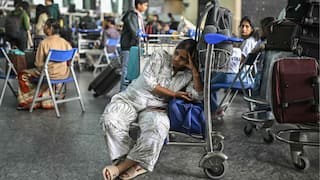US Economy Slips Into 'Technical Recession'; GDP Shrinks For Second Consecutive Quarter
The White House is trying to dismiss the recession concerns ahead of the November 8 midterm elections that will decide whether Biden's Democratic Party retains control of the US Congress

The US economy shrinked for the second consecutive quarter amid the Federal Reserve’s aggressive monetary policy tightening to tackle high inflation raising concerns of recession. The gross domestic product (GDP) declined at a 0.9 per cent annualised rate last quarter, the commerce department said in its advance estimate of the GDP on Thursday, reported news agency Reuters. The second straight quarterly decline in GDP meets the standard definition of a recession, according to the report.
Analysts had estimated a range from as low as a 2.1 per cent rate of contraction to as high as a 2.0 per cent growth pace. The economy tapered at a 1.6 per cent pace in the first quarter.
What are other indications of recession?
The National Bureau of Economic Research, the official arbiter of recessions in the United States, defines recession as "a significant decline in economic activity spread across the economy, lasting more than a few months, normally visible in production, employment, real income, and other indicators."
Meanwhile, Job growth averaged 456,700 per month in the first half of the year, which is a positive sign but the risks of a downturn still linger. Homebuilding and house sales have weakened while business and consumer sentiment have softened in recent months.
The White House is trying to dismiss the concerns of the recession as it seeks to calm voters ahead of the November 8 midterm elections that will decide whether President Joe Biden's Democratic Party retains control of the US Congress.
A separate report from the Labor Department on Thursday showed initial claims for state unemployment benefits decreased 5,000 to a seasonally adjusted 256,000 for the week ended July 23. Jobless claims remain below the 270,000-350,000 range that economists believe would hint at a rising unemployment rate.
A broader measure of inflation continued to show an upward trend at an 8.2 per cent rate, the fastest since 1981, and was higher from the first quarter’s 8 per cent pace. Income at the disposal of households adjusted for inflation fell at a 0.5 per cent pace after plunging at a 7.8 per cent rate.
The Fed on Wednesday raised its policy rate by another three-quarters of a percentage point, bringing the total interest rate hikes since March to 225 basis points. Fed Chair Jerome Powell acknowledged the softening economic activity as a result of tighter monetary policy.






































